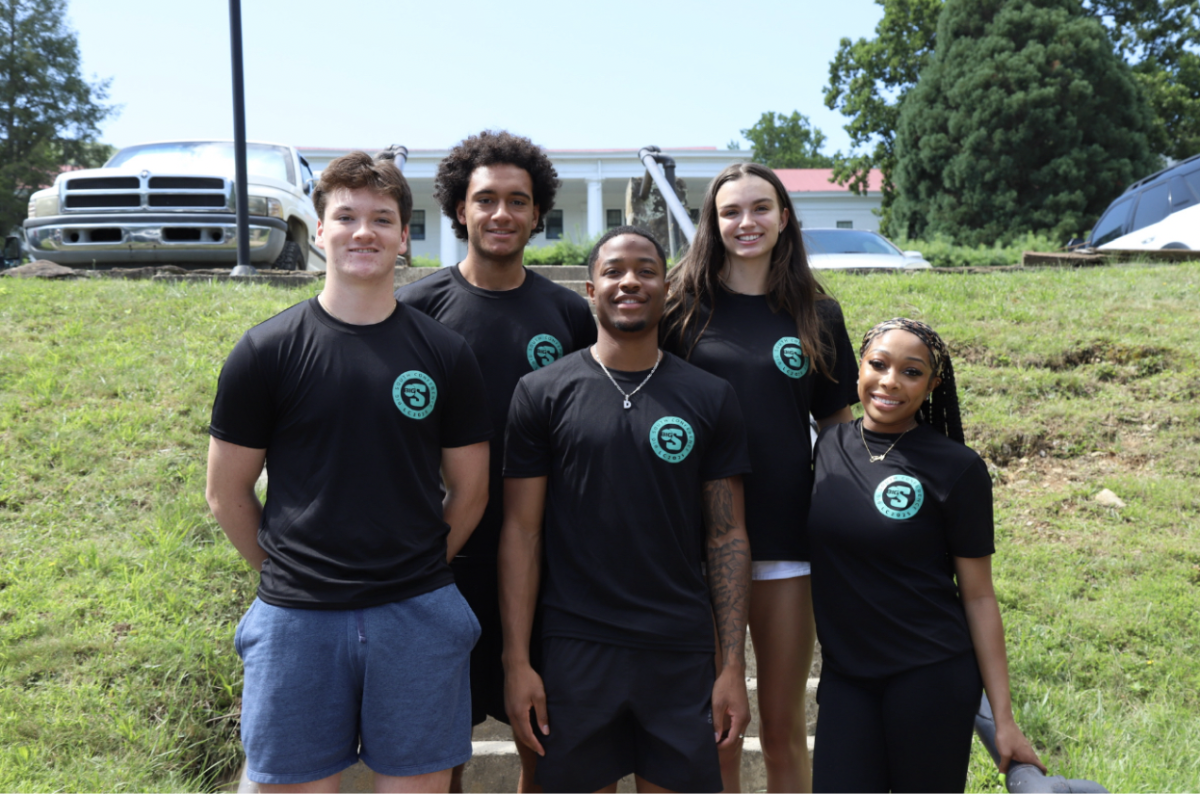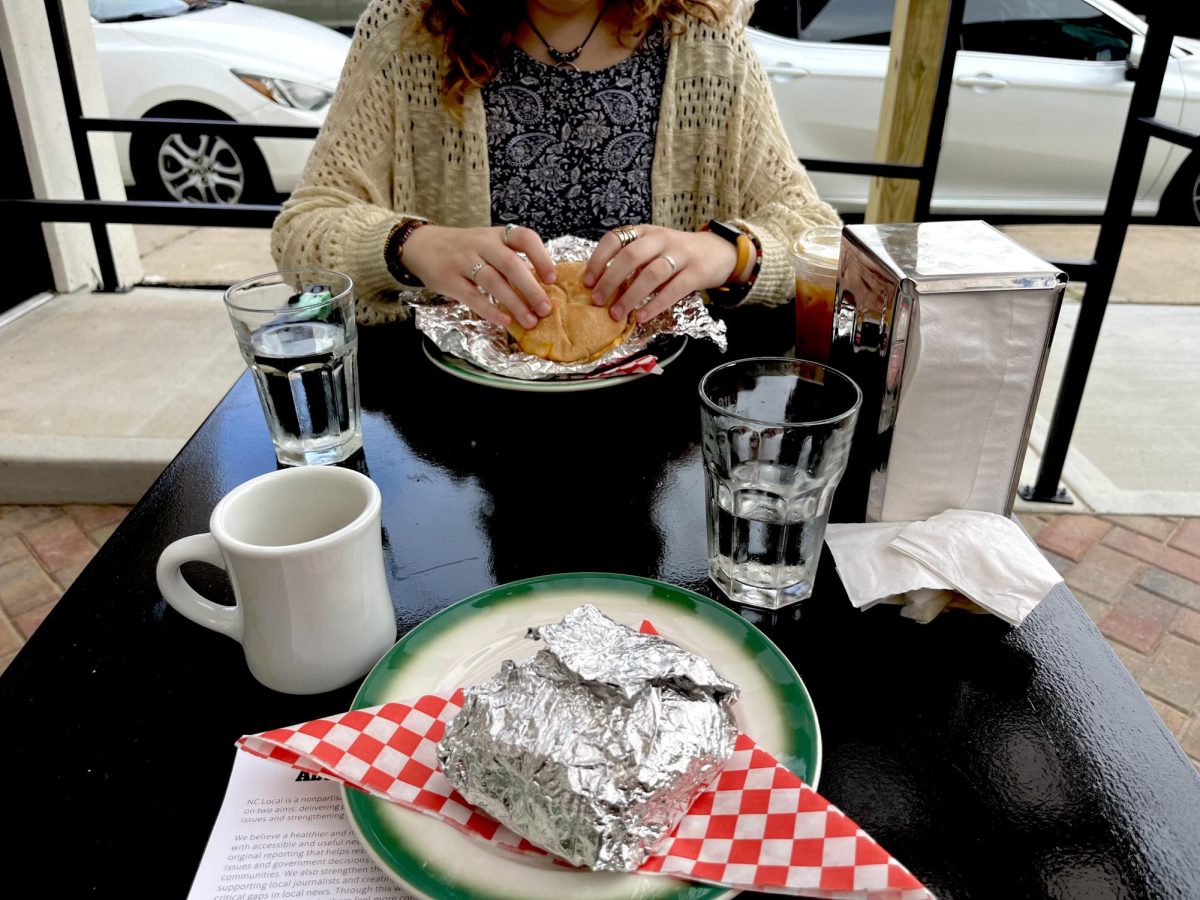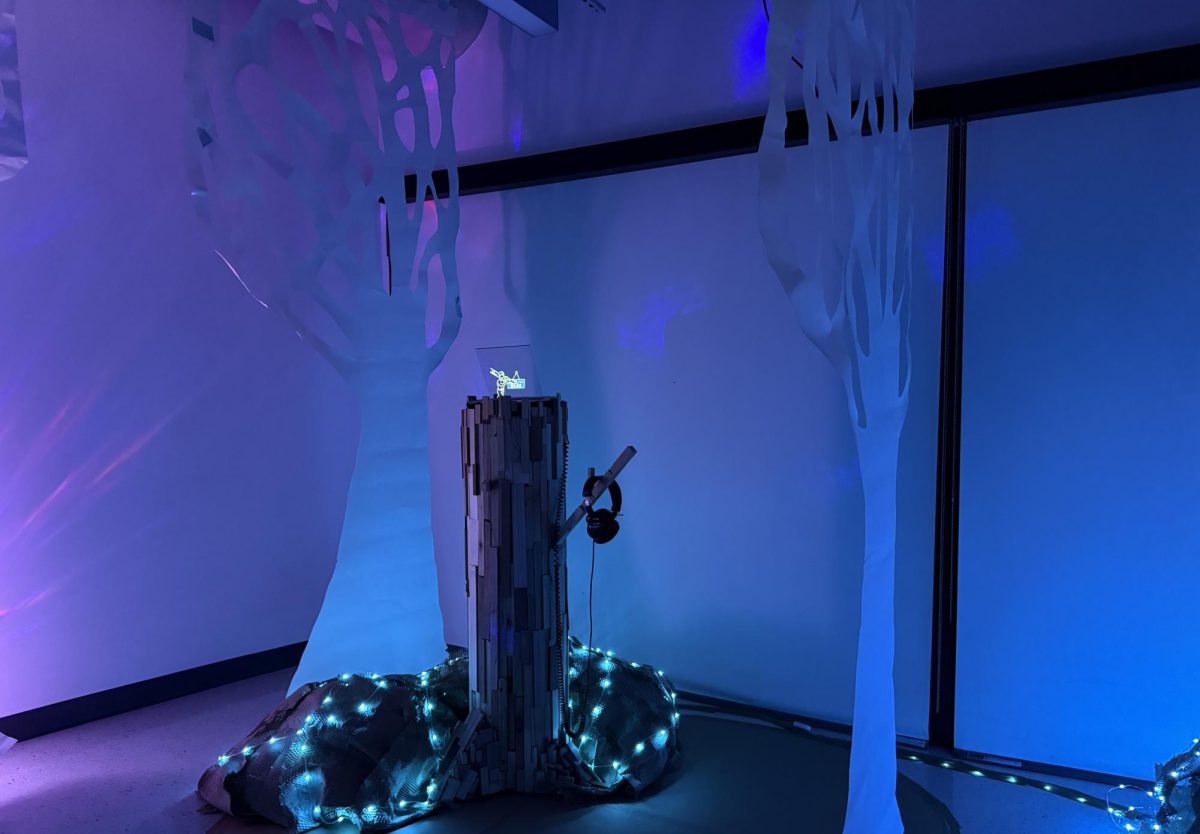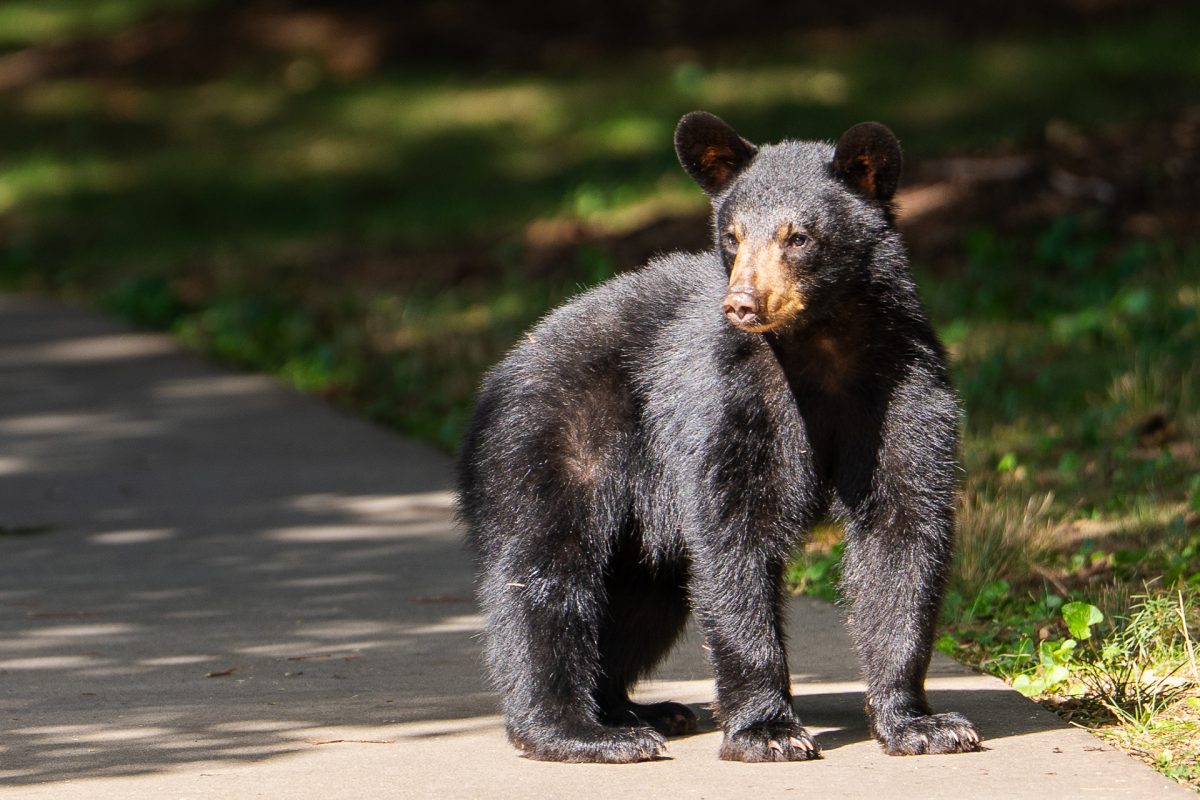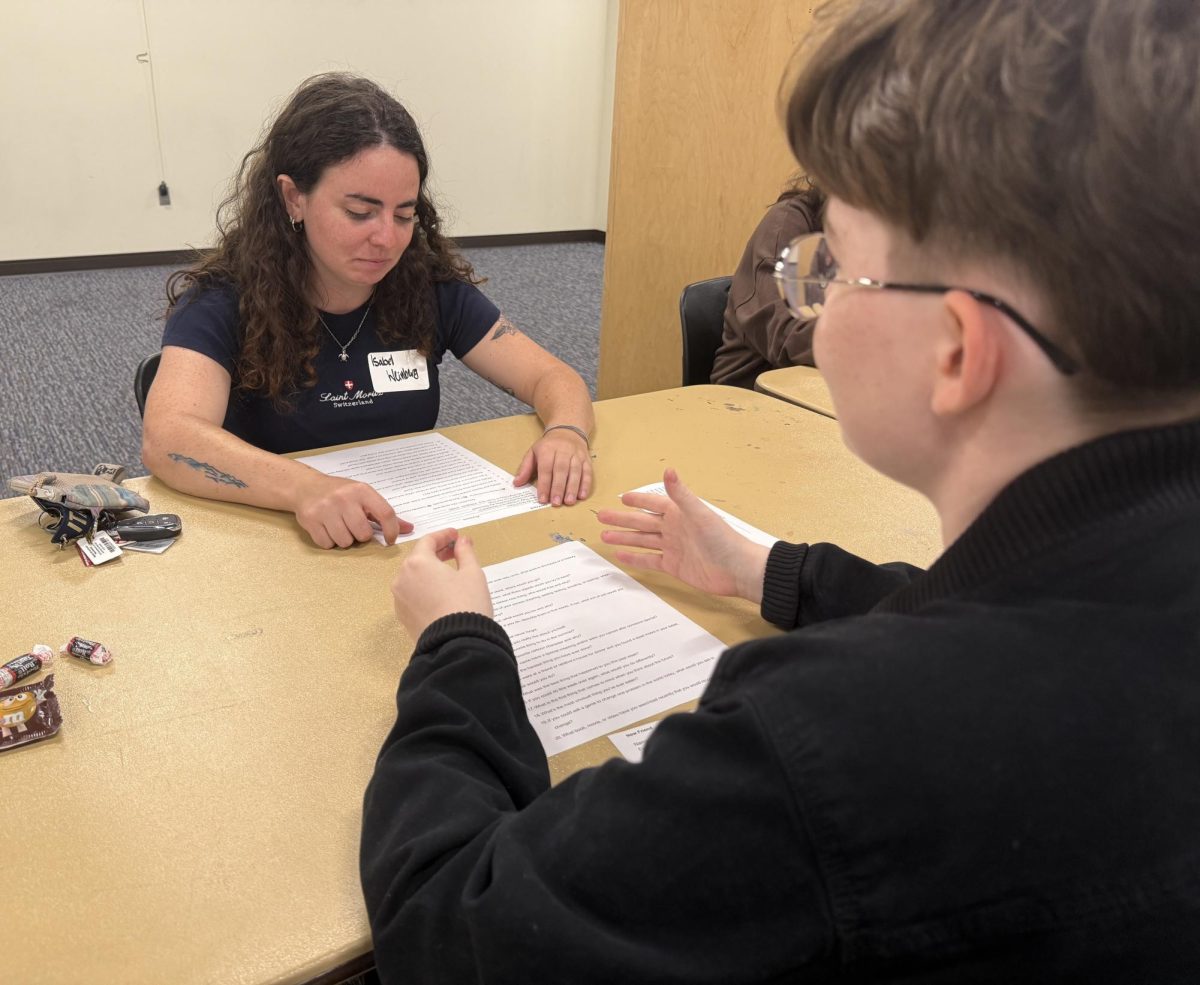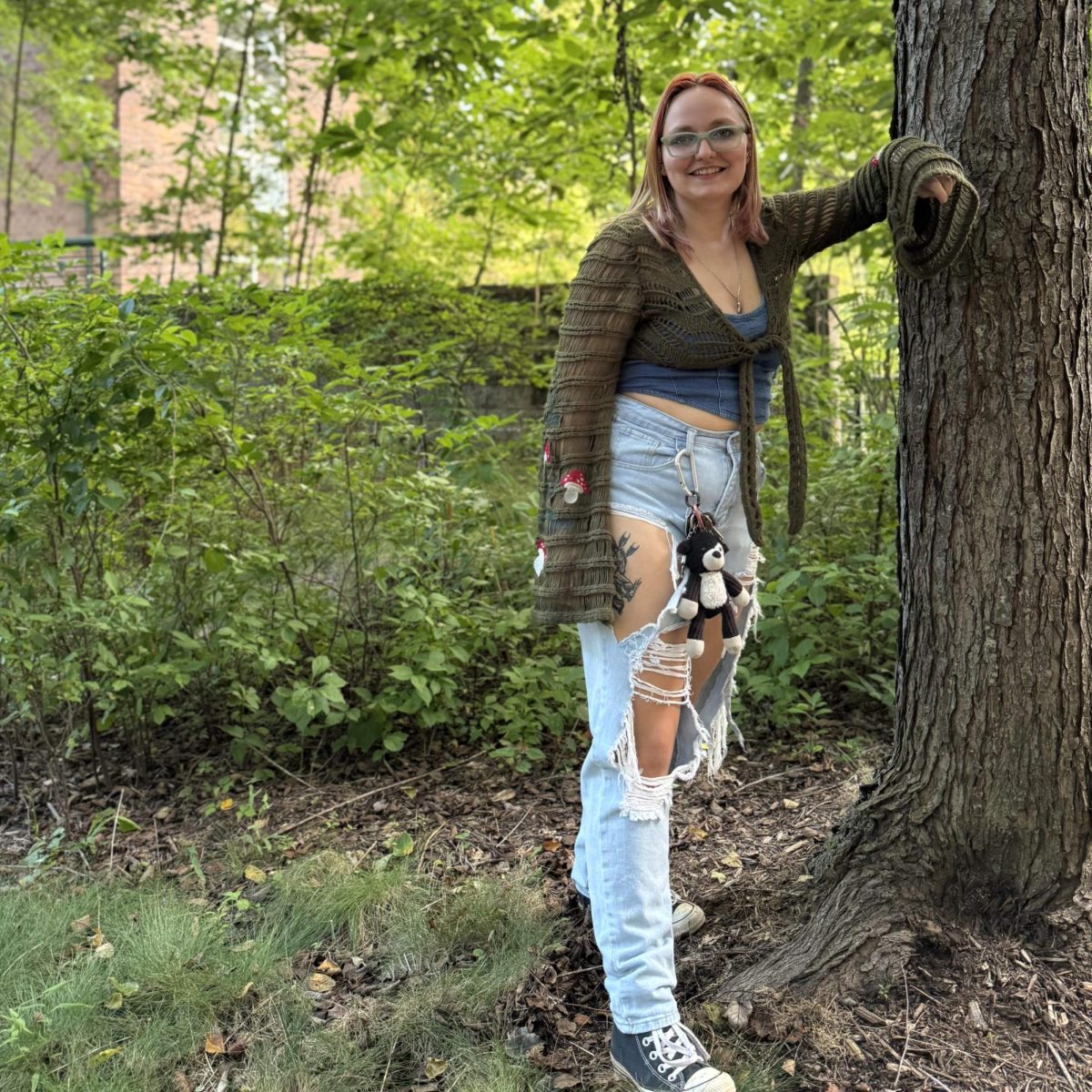Ong Yang
Contributor
[email protected]

shop.
Bearing a petite figure and a head topped with dreadlocks, Julie Neumark embarked on her new hairstyle after
visiting Hungary during her gap year. From a small town in Elkin, North Carolina, with approximately 4,000
people, Neumark was surrounded by the conservative Southern style that encompassed much of the community around her.
“Everyone was pretty much dressed the same,” Neumark said. “Vineyard vines shirts and just very Southern, typical style and that wasn’t me and I felt like ‘This isn’t me. I’m a flower child. I feel like I should have been
born in the 70s.’”
Before getting dreadlocks, Neumark recalled the unhappiness she felt with her hair. She knew she was different from the folks she grew up with, and wanted a change. Neumark was into the hippie style and wanted big hair that felt fun and cool to represent how she felt both internally and externally.
“I really wanted to have dreadlocks to kind of show that ‘this is who I am,’” Neumark said.
However, some students at the University of North Carolina at Asheville consider dreadlocks to be a form of
cultural appropriation. UNCA student Sophia Isis, who is biracial, stood firm in her opinion that dreads should not be worn by white people, her confidence emitted through every word.
“If you enslave a population, mass murder, beat them, it carries on. It’s a genocide and you take everything
away from them,” Isis said.
Every culture expresses themselves and every aspect of how they represent themselves creates a cultural message, said Agya Boakye-Boaten, the director of Interdisciplinary, International and Africana studies programs at UNCA.
“The issue with appropriation is that you adopt certain parts of culture without proper recognition of its
origins, without recognition of its historical context or cultural nuances,” Boakye-Boaten said.
Neumark researched facts around dreadlocks and understood that to some individuals, they were seen as
appropriation. She still wanted to feel the part of the bohemian style and felt that this was what her heart wanted.
The images that lingered in Neumark’s mind consisted of people with flowy dresses, flowers and dreadlocks. After high school, Neumark decided to spend the spring traveling to Hungary where she worked at different farms through a program called WWOOF, a non-profit organization that allows people to travel anywhere
in the world by creating a profile to connect with farms in a chosen country. Neumark visited six different farms spending anywhere between five days to two and a half weeks at each.
“Before starting college, I needed something that would help me grow as an independent adult and sort of finding my way,” Neumark said. “I visited the countryside of Hungary so that I could see the rest of my home country that I hadn’t seen before and meet new people, gain some experiences and learn about farming.”
During the year Neumark spent in Hungary, she also taught English classes, to students between seventh
and eleventh grade, an experience unforgettable to Neumark.
Neumark studies environmental science at UNCA where she pursues her passion for farming, agriculture
and sustainability, an interest since sophomore year of high school.
Her passion for the environment drove her to work at farms in Hungary where she met a Dutch girl named Denise who quickly became friends with Neumark. The two frequently explored the surrounding area of the farm during their free time.
“She was great and she had really long dreadlocks and she helped me dreadlock my hair,” Neumark said. “It
took about three days. We both did it. She did most of my hair and I did some of the front parts once I knew
the techniques because she showed me how to do it.”
Originally, Neumark’s parents did not like her dreads and thought they were distasteful.
“They thought people would get the wrong idea about it, but I think now they’ve come around and they
like my dreads,” Neumark said with a hint of a smile. “They’ve accepted it for sure.”
When Neumark attended her freshman year at college, she was unsure of how the students would treat
her. She was struck with surprise when faced with the positive comments on her attention-grabbing hairstyle.
“Whenever I’m out on the street or on campus, or basically anywhere, pretty much every day I get about
one or two comments on my hair, like ‘Woah! How did you get that to happen?’ or ‘how long have you
been growing your dreads?’ or ‘nice hair’ Neumark said enthusiastically.
“Everyone is interested and positive.” Neumark said she has never been discriminated against for having
dreadlocks and is unsure if people of color have experienced discrimination for having dreadlocks.
“I will say there are a lot of people who think I sell drugs or think that I smoke weed, so there have been people
who ask me if I wanna buy weed or ask me if I would sell them some weed,” Neumark said.
For white people, stereotypes are even kinder and more forgiving than they are for a Black person, according
to Jazmin Whitmore, the owner of Those Lovely Locks and Neumark’s personal loctician.
As Whitmore sat casually with her flowing dreads and her cat named Blink in her lap, white dreadlocks and black dreadlocks are perceived in society. When a white person has dreadlocks, the worst stereotype they would get is they might be dirty, they might smoke weed and they might be a hippie,” Whitmore said.
A student at UNCA and person of color, Elina Morrison, said the Black community is judged on character or
socioeconomic status because of their hair. She wears her braids tied into a side bun, donning a loosley-fit purple T-shirt.
Before speaking, Morrison paused to think and chose her words carefully when explaining herself.
“White people don’t recognize the privilege they have when they wear that hair in that way because the
nuance of it and weight put on Black people when they wear their hair that way,” Morrison said. “Not that is not fair, but in American culture specifically it’s different because there’s so much more meaning and consequences for POC.”
In some states, there are laws to prevent discrimination of people based on hair. When Black people wear their hair in the natural style it doesn’t look as sleek and neat as white hair. She said how corporate white America doesn’t understand the variations of Black hair and how it moves and deem it messy or not kept up,
according to Morrison.
“The Crown Act forces companies to acknowledge their biases and their discrimination,” Morrison said.
Morrison recounts her time in high school and early college, when she tried to conform to the eurocentric standards of beauty, she said.
“I would straighten my hair because I thought that was prettier and what everyone else was doing. I
wanted to blend in,” Morrison said.
“For Black hair, heat isn’t good for your natural hair texture, it prohibits growth, and the good oils you need
in your hair. As I have gotten older I’ve embraced more natural hairstyles because they’re more fun and last
longer.”
Morrison emphasized the difference between a Black and white person wearing dreadlocks carries
different meanings.
“I implore white people to analyze the decision they’re making and ask them to understand,” Morrison said.
“It’s just recognizing that we come from different places and we live in the world in different ways.”
While sitting hunched over at first, Isis quickly adjusted her posture while forming her thoughts on Black appropriations. Her eye-catching white pedicure and manicure contrasted with her blue jeans, black tank top and slides. Isis’ wet styled curly coiled hair, flowed naturally around her feminine features.
“I don’t think any white person should wear dreads,” Sophia said with confidence. “White people have stolen
so much and taken so much. To be white is to be cultureless. When you lose your whiteness, you lose your
culture, you try to pull from other cultures.”
Isis recounts her fortunate childhood with the Black community.
According to Isis, society’s beauty standards have caused a disparity in the knowledge of natural hair care between children with parents with the same hair texture versus those with parents of different hair textures.
“I see a lot of biracial kids whose moms don’t know how to do their hair,” Isis said. “I have a white mother who learned how to do my hair unlike a lot of white moms, so she was able to style my hair. I did appreciate that.”
In contrast to Isis’ childhood, Whitmore said she endured the harsh stages of hair care in her youth with-
out the proper guidance. Her mother is of European descent and her father of Jamaican descent but no longer in the picture.
“I didn’t have anybody to teach me or even to show me how to love my hair, let alone do it. Everyone in my
family had long thick straight flowy hair, very close to the eurocentric standards of beauty,” Whitmore said.
Isis calmly said how dreads can be inappropriate and disrespectful when worn by White people or those whose
hair texture does not need protection.
“I kind of just laugh when I see a white person wear dreads. It’s weird to me. I think they would understand
that it’s not for them. I’m not angry about it but I do think it a problem,” Isis said.
Neumark ended her discussion on dreadlocks by encouraging an open discussion where conversations can
start. The empathetic and sensibility in Neumark’s voice shows the intention of her lifestyle that only wants to respect other cultures.
“What I really want people to know is that I’m not trying to offend anyone, I really respect all cultures and I think social equity and equality is so important,” Neumark said. “If anyone has questions, I want people to feel
comfortable talking to me, I’m super open to hearing other perspectives and I don’t want anyone to think that
I’m here to start drama or that I’m making a statement that Black culture is not important and that I don’t re-
spect it at all. I’m not trying to spread any kind of hate.”
Childhood friend Anna Taylor said Neumark has a wide smile lighting up her fierce hazel eyes.
“She is very loving and caring about other people,” Taylor said. “She is very good at having an open understanding of people and the world.
She kind of lives like she’s in love with the whole world. Anything she does, she does it in love. She’s not spiteful or judgemental.”
According to Boakye-Boaten, the intention of a lot of actions by Europeans is not necessarily to hurt anyone, but the impact has been so severe and the lack of recognition of the impact is where the problem lies.
“If you’re from the eastern culture, what you do, what you say, how you say it, you always think about how it
lands. I don’t think Europeans think about that,” Boakey-Boaten said.
White people wearing dreadlocks do not take the pains to truly be co-conspirators of diminishing the systemic institutionalized and dehumanization of Black individuals, according to Boakye-Boaten.
“I do not think that white people don’t have the right to wear locs, but I think that once I wear the locs, I
should begin to embody the cultural consciousness of the origin of the locs,” Boakye-Boaten said.


![Brooke Pedersen [second from the right] and Luis Reyes [right] hold banners during the Wrap The Woods event.](https://thebluebanner.net/wp-content/uploads/2025/09/ELIZABETH_PRITCHITT_IMG_3470-1200x804.jpg)





